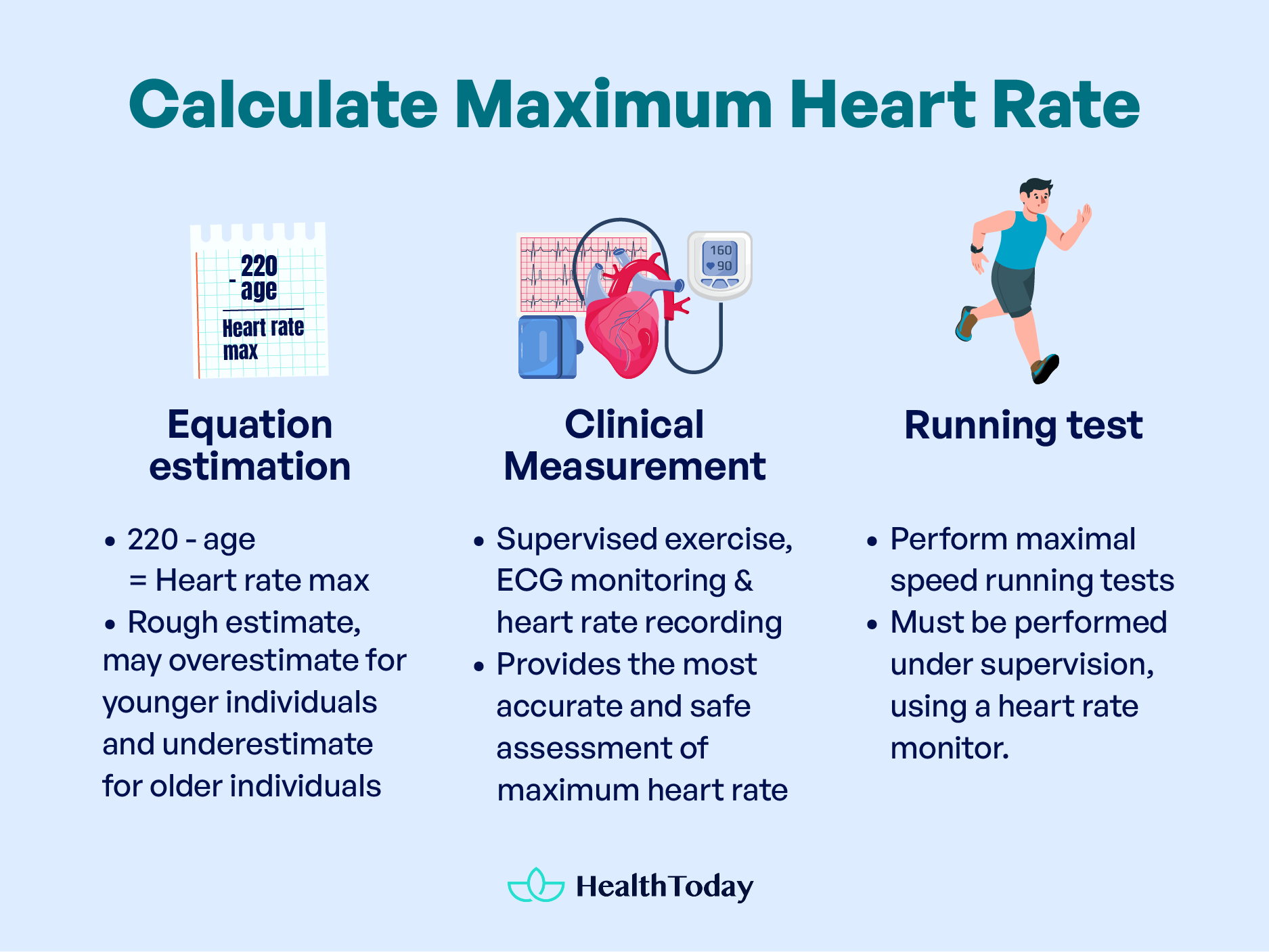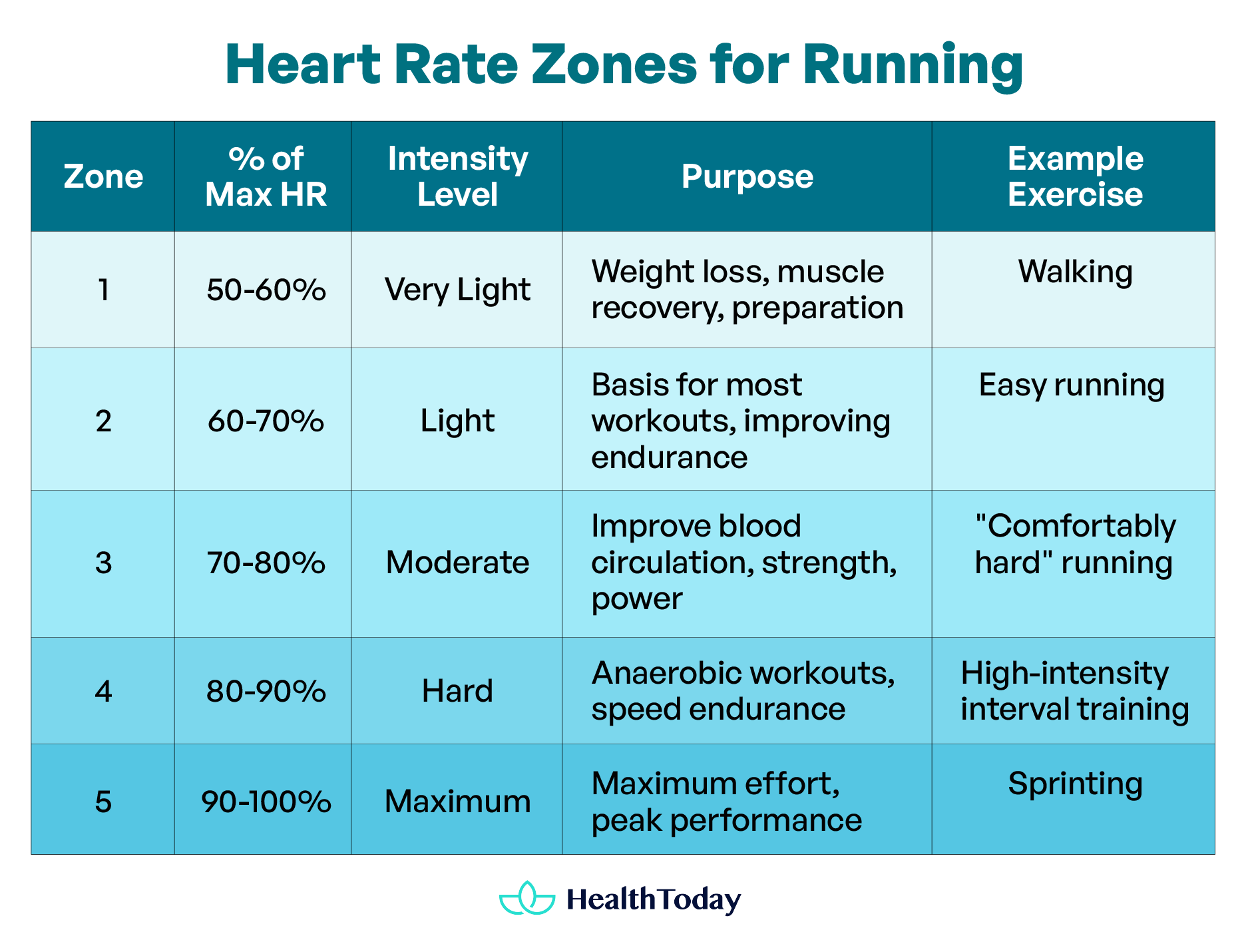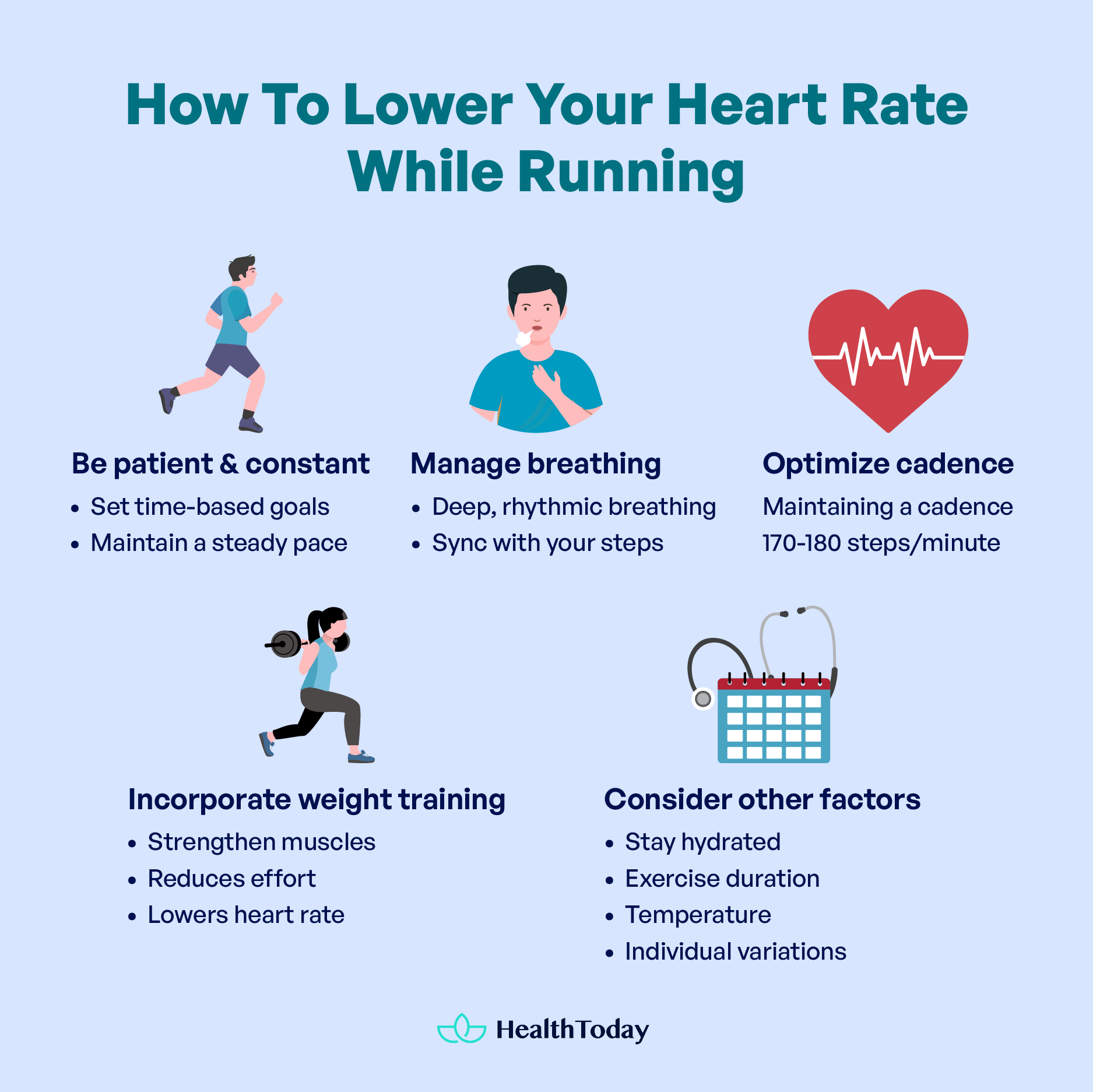Table of Contents
When we run, we often pay attention to our heart rate, but do we really understand its importance in sport? Heart rate is the number of times the heart beats in one minute. At rest, the normal heart rate is 60 to 100 beats per minute. When running, the heart works harder to pump blood to the muscles, which results in an increased heart rate. Your age, previous training, and type of exercise are among the factors that affect your heart rate.
This article will explore the average heart rate while running, the good heart rate for running, how to calculate the maximum heart rate, the heart rate zones for running, and how the body uses energy in these zones. We will also discuss how to lower your heart rate while running.
Average heart rate while running: What is good and bad?
When we start running, our heart begins to work harder, increasing blood flow to keep up with the demands of our muscles in motion. The resting heart rate ranges from 60 to 100 beats per minute (1), which causes the heart to pump approximately 5 liters per minute. During a run or workout, the heart beats faster to pump more blood to the rest of the body. The average heart rate during running varies from person to person, as it can be influenced by several factors, including (2):
- Age: Young people have a high heart rate compared with old people.
- Fitness level: Runners tend to have a lower resting heart rate than people with a sedentary lifestyle due to better cardiovascular adaptation. The heart has more strength and needs less pumping to send the same blood to the rest of the body than an untrained heart.
- Air temperature: Elevated heat and humidity levels can increase heart rate.
- Health conditions: Individuals who experience alterations in the electrical conduction of the heart may have lower heart rates at rest and during physical activity.
- Medication use: Beta-blockers can slow the heart rate, while beta-2 agonist drugs, such as salbutamol, can increase it in high doses.
- Stress: Emotional stressors can accelerate the resting heart rate. It is not usually affected by physical activity.
For most runners between ages 20 and 45, the target average training heart rate is usually between 100 and 160 beats per minute. However, this average depends on several factors, such as your current fitness level and your maximum heart rate.
According to the American Heart Association (AHA), your target heart rate during moderate exercise should be 50 to 70% of your maximum heart rate. During high-intensity exercise, it should be about 70 to 85% of the maximum (3).
For example, if you are 40, we can apply a simple formula: To get the maximum heart rate, you deduct the age number from 220. In this case, 180 is your maximum heart rate, which means that, during a race, you should maintain a heart rate between 90 and 126 beats per minute during moderate exercise and 126 to 153 in high-intensity exercise on average.
It is tricky to determine the normal heart rate for running, as the figure varies from runner to runner. Therefore, we recommend you consider your target heart rate for running. This will allow you to optimize your running according to your needs.
How do you calculate your maximum heart rate?
Knowing your maximum heart rate is very useful to optimize your workouts and take your endurance to the next level.
In adults, resting heart rates remain relatively constant across various age groups. However, the parameter that does vary is the maximum heart rate. Several methods exist to estimate your maximum heart rate, each with different degrees of precision.

Equation: 220 – age = Heart rate max
The widely known “220 minus your age” equation, introduced in the 1970s, was not originally designed for strict application due to inaccuracies. For younger people, it is likely to overestimate the actual maximum heart rate, while for older people, it may underestimate it. However, it may be useful when you want a rough estimation.
Maximum heart rate measurement in a clinical setting
For those seeking to determine their Maximum Heart Rate (HR MAX) with maximum accuracy, the best option is to undergo a clinical measurement. This study consists of an exercise test in which the patient gradually performs more intense exercise on a treadmill or exercise bike while having an electrocardiogram (ECG) and their heart rate recorded. These tests are usually supervised by a cardiologist, ensuring an accurate and safe assessment of your maximum heart rate.
Determination of maximal heart rate by running a test
Although it is recognized that the most accurate estimation is achieved in a clinical setting, an alternative method of determining maximum heart rate is the maximal speed running tests. This test must be performed under the supervision of another person.
To perform the test, use a heart rate monitor and record the maximum heart rate achieved. This value becomes your maximum heart rate. There are several test protocols, so we recommend contacting a fitness professional for the best test.
Understanding heart rate implies not only knowing the heart rate at rest but also understanding the different causes that affect it during physical activity, such as age, training, medication, and illnesses, among others. Calculating the maximum heart rate will allow safe physical activity, minimizing the risk of excessive fatigue or injury.
Heart rate zones for running
There are several ways to measure and optimize performance during a run or aerobic workout, such as evaluating pace per mile or considering heart rate-based pacing, using beats per minute (bpm) as a reference to determine the speed of your workout (4, 5).

Here are the five different zones for your maximum heart rate:
- Very light intensity: Training in zone 1 involves using only 50-60% of our maximum heart rate. Performing activities in this zone is useful for losing weight, promoting muscle recovery, and preparing the body for more intense zones. To work in this zone, you should choose exercises that allow you to easily control your heart rate, such as walking.
- Light intensity: Run or train at 60 to 70 percent of your maximum heart rate. Exercise within zone 2 should be the basis of most workouts, especially if you are a beginner runner. This level is ideal for improving overall endurance. The body becomes more efficient at burning fat, oxidizing, and improving muscular fitness and capillary density.
- Moderate intensity: Push your body to 70 to 80 percent of your maximum heart rate. Exercise in zone 3 is especially effective for improving the efficiency of blood circulation to the skeletal muscles and heart. Here, you train strength, power, and aerobic capacity. The best way to describe it is “comfortably hard.” You’re feeling the workout but still have the strength to keep pushing. This zone marks the beginning of lactic acid buildup in the bloodstream.
- Hard intensity: Intensify your pace to be 80 to 90 percent of your maximum heart rate. Here in zone 4 are anaerobic workouts, where energy comes almost exclusively from carbohydrates. Breathing becomes significantly more difficult, and aerobic effort increases. Training at this intensity significantly improves speed endurance.
- Maximum intensity: This zone demands maximum effort—90-100% of our maximum heart rate. The heart, blood, and respiratory system are working at maximum capacity. Lactic acid accumulates, causing the need to reduce the intensity after a few minutes, so this phase cannot be maintained throughout the training or race.
Adjusting training according to heart rate zones provides many benefits, optimizing performance and safety. This strategy lets you focus on specific targets during a workout, such as endurance or speed, avoiding overexertion and injury. It also promotes fat burning and contributes to a more balanced athletic performance.
190 heart rate when running
A heart rate of 190 or above while running can be considered high, although it is always important to consider age, previous training level, and exercise intensity. In a few situations, we can take a heart rate of 190 as normal, such as in adolescents or young adults doing vigorous exercise to reach their maximum heart rate.
In general, training at very high heart rates can be detrimental to health, as it can cause symptoms such as chest pain, arrhythmias, and discomfort (6). If someone frequently trains at these heart rates, it is strongly recommended to consult a physician for further testing, such as ergometry, which will provide a more detailed assessment of cardiovascular health and help determine the safety and appropriateness of the training plan.
If you reach your maximum heart rate during the run in every workout, it is advised to slow down to a more comfortable intensity. In addition, it is important to stop exercising if you experience dizziness, nausea, vomiting, or discomfort.
How to lower your heart rate while running
Reducing your heart rate while running allows you to keep your aerobic activity in a lower stress zone, improving oxygenation in your muscles and making it easier to adapt to a constant pace. Below are some tips to help you lower your heart rate while running:

- Be patient and constant. Controlling your heart rate while running requires patience. Avoiding rushing while running and setting goals based on time rather than distance helps to maintain a proper pace, avoid overtraining, and keep your heart rate in the aerobic zone.
- Learn to manage your breathing. Breathing directly influences heart rate. Adopting deep and rhythmic breathing, synchronizing it with the steps, helps to keep calm and reduce the heart rate during the race.
- Optimize your cadence. Cadence is the number of steps you take per minute. Maintaining a cadence between 170 and 180 steps per minute improves running efficiency (7). Shorter, faster strides decrease energy expenditure, keeping your heart rate lower.
- Incorporate weight training. Strength training strengthens muscles, reducing the effort needed to run and maintaining a lower heart rate over difficult terrain or longer distances.
- Consider other factors. Hydration, duration of exercise, outside temperature, and individual variations, such as age, also affect heart rate during running.
What is the optimal heart rate for running a marathon?
The optimal heart rate for running a marathon varies among individuals. Generally, it is recommended to maintain a heart rate within the aerobic zone, typically around 70-85% of your maximum heart rate.
What should be the heart rate for sprinting?
Sprinting involves high-intensity efforts, and heart rates during sprinting can reach near-maximum levels. The heart rate for sprinting may range from 80% to 100% of your maximum heart rate.
What is the good long-run heart rate zone?
The ideal heart rate zone for long runs is typically within the aerobic zone, around 60-70% of your maximum heart rate. This allows for sustained effort and promotes endurance without excessive fatigue.
What heart rate is too high when running?
A heart rate that is excessively high during running can vary based on individual factors. Generally, if your heart rate consistently exceeds 90-95% of your maximum heart rate or you experience symptoms like dizziness, it may be considered too high, and you should consider stopping or decreasing the intensity.
What heart rate zone should I run in?
The heart rate zone for running depends on your fitness goals. For cardio training, aim for 70-80% of your maximum heart rate. Specific goals, such as endurance or aerobic/anaerobic interval training, may require adjustments within different heart rate zones.
Summary
Knowing your heart rate while running is central to optimizing performance and ensuring safe and effective training. Heart rate varies from person to person and is influenced by age, fitness level, and environmental conditions.
Calculating maximum heart rate and identifying heart rate zones can guide training intensity, improve endurance, and avoid fatigue. Although there is no universal “normal” heart rate for running, an individual approach must consider age, previous health conditions, and maximum heart rate.
Heart rate zones, ranging from very light to maximum intensity, provide a scientific basis for optimizing workouts to optimize aerobic or anaerobic endurance.
When we have very high heart rates during aerobic training, in addition to considering consulting a physician if it persists in all workouts, we should incorporate strategies such as being patient, controlled breathing, and slowing the pace, which can help reduce the heart rate during the race, promoting the benefits of aerobic training on cardiovascular health.

















Comments
0